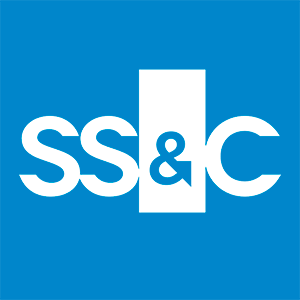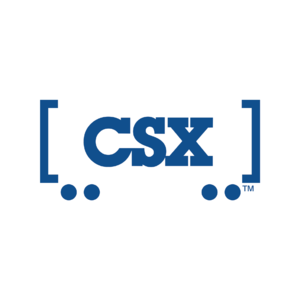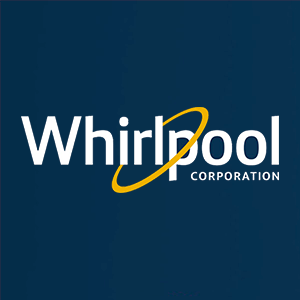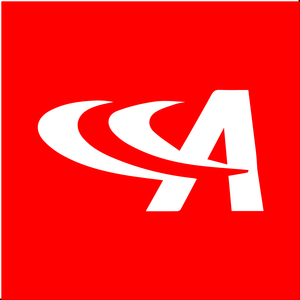
Acuity Brands (AYI)
We see potential in Acuity Brands. Its high free cash flow margin and returns on capital show it can produce cash and invest it wisely.― StockStory Analyst Team
1. News
2. Summary
Why Acuity Brands Is Interesting
One of the pioneers of smart lights, Acuity (NYSE:AYI) designs and manufactures light fixtures and building management systems used in various industries.
- Offerings are difficult to replicate at scale and result in a top-tier gross margin of 44.5%
- Earnings growth has trumped its peers over the last five years as its EPS has compounded at 16.9% annually
- A downside is its core business is underperforming as its organic revenue has disappointed over the past two years, suggesting it might need acquisitions to stimulate growth


Acuity Brands has some noteworthy aspects. If you believe in the company, the price looks reasonable.
Why Is Now The Time To Buy Acuity Brands?
High Quality
Investable
Underperform
Why Is Now The Time To Buy Acuity Brands?
At $372 per share, Acuity Brands trades at 18.6x forward P/E. Acuity Brands’s current multiple might be below that of most industrials peers, but we think this valuation is warranted after considering its business quality.
This could be a good time to invest if you think there are underappreciated aspects of the business.
3. Acuity Brands (AYI) Research Report: Q3 CY2025 Update
Intelligent lighting and space solutions provider Acuity Brands (NYSE:AYI) missed Wall Street’s revenue expectations in Q3 CY2025, but sales rose 17.1% year on year to $1.21 billion. Its non-GAAP profit of $5.20 per share was 7.5% above analysts’ consensus estimates.
Acuity Brands (AYI) Q3 CY2025 Highlights:
- Revenue: $1.21 billion vs analyst estimates of $1.23 billion (17.1% year-on-year growth, 1.5% miss)
- Adjusted EPS: $5.20 vs analyst estimates of $4.84 (7.5% beat)
- Adjusted EBITDA: $240.7 million vs analyst estimates of $210.8 million (19.9% margin, 14.2% beat)
- Operating Margin: 14.9%, in line with the same quarter last year
- Free Cash Flow Margin: 14.7%, similar to the same quarter last year
- Organic Revenue rose 17.1% year on year vs analyst estimates of 4.1% growth (1,295.5 basis point beat)
- Market Capitalization: $10.45 billion
Company Overview
One of the pioneers of smart lights, Acuity (NYSE:AYI) designs and manufactures light fixtures and building management systems used in various industries.
The company operates through two primary business segments: Acuity Brands Lighting and Lighting Controls (ABL) and the Intelligent Spaces Group (ISG). These segments focus on designing, manufacturing, and bringing to market products and services.
The ABL segment forms a substantial part of Acuity's business, offering a wide range of lighting solutions including commercial, architectural, and specialty lighting, as well as lighting controls and components. This segment's portfolio predominantly features LED technology designed to optimize energy efficiency and comfort for various indoor and outdoor applications.
The ISG segment focuses on making spaces smarter, safer, and greener by connecting edge devices to the cloud. This segment offers building management solutions and software, including products for controlling HVAC, lighting, shades, refrigeration, and building access. ISG's intelligent building software aims to improve building system management and automate labor-intensive tasks while delivering operational energy efficiency and cost reductions.
Acuity Brands' revenue structure is primarily based on the sale of its lighting and building management products and solutions. The company serves including electrical distributors, retail home improvement centers, electric utilities, national accounts, original equipment manufacturers, digital retailers, lighting showrooms, and energy service companies. Acuity's products are sold through multiple avenues, including independent sales agencies, internal sales representatives, consumer retail channels, and directly to large corporate accounts and OEM customers.
The company's manufacturing and distribution has eighteen manufacturing facilities spread across the United States, Mexico, Europe, and Canada. A significant portion of the company's manufacturing takes place in Mexico, where it operates several facilities under Maquiladora status, allowing for duty-free import of raw materials.
4. Electrical Systems
Like many equipment and component manufacturers, electrical systems companies are buoyed by secular trends such as connectivity and industrial automation. More specific pockets of strong demand include Internet of Things (IoT) connectivity and the 5G telecom upgrade cycle, which can benefit companies whose cables and conduits fit those needs. But like the broader industrials sector, these companies are also at the whim of economic cycles. Interest rates, for example, can greatly impact projects that drive demand for these products.
Competitors offering lighting and lighting systems solutions include Eaton (NYSE:ETN), Signify (OTCMKTS:PHPPY), and Osram Licht AG (OSAGF:OTCPK)
5. Revenue Growth
A company’s long-term sales performance can indicate its overall quality. Any business can experience short-term success, but top-performing ones enjoy sustained growth for years. Regrettably, Acuity Brands’s sales grew at a tepid 5.5% compounded annual growth rate over the last five years. This fell short of our benchmark for the industrials sector and is a poor baseline for our analysis.
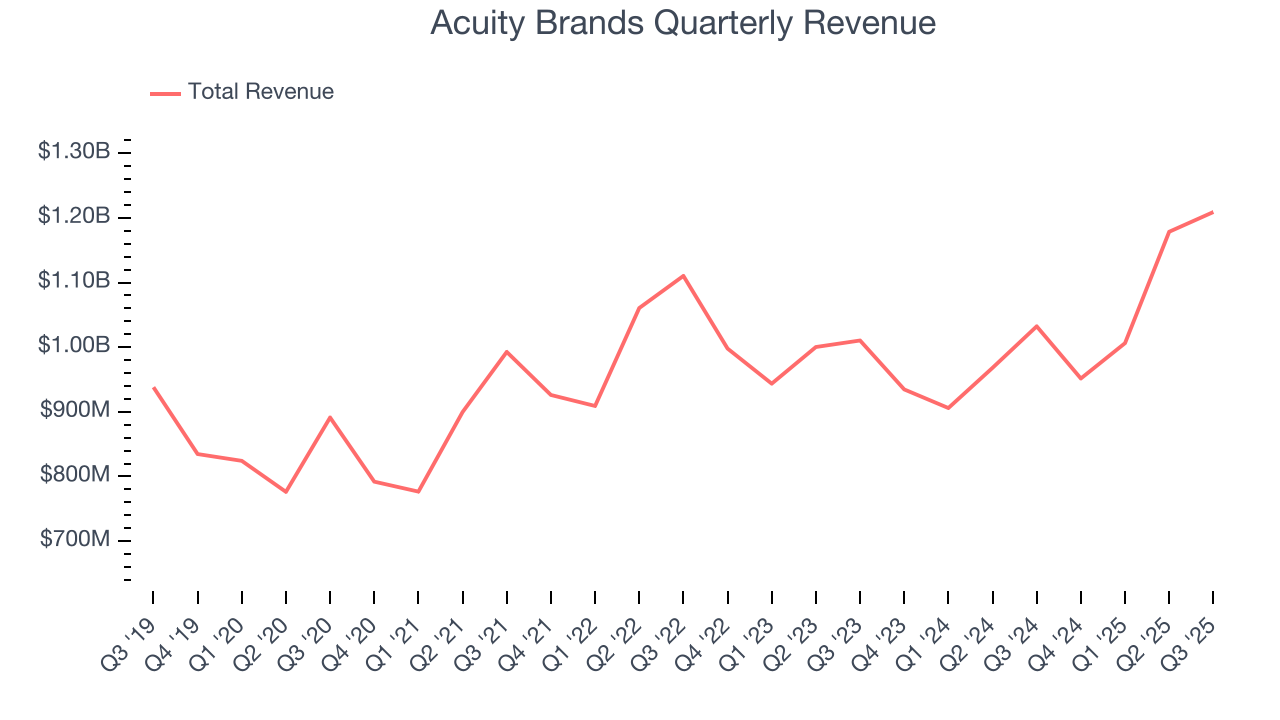
We at StockStory place the most emphasis on long-term growth, but within industrials, a half-decade historical view may miss cycles, industry trends, or a company capitalizing on catalysts such as a new contract win or a successful product line. Acuity Brands’s annualized revenue growth of 4.9% over the last two years aligns with its five-year trend, suggesting its demand was consistently weak. We also note many other Electrical Systems businesses have faced declining sales because of cyclical headwinds. While Acuity Brands grew slower than we’d like, it did do better than its peers. 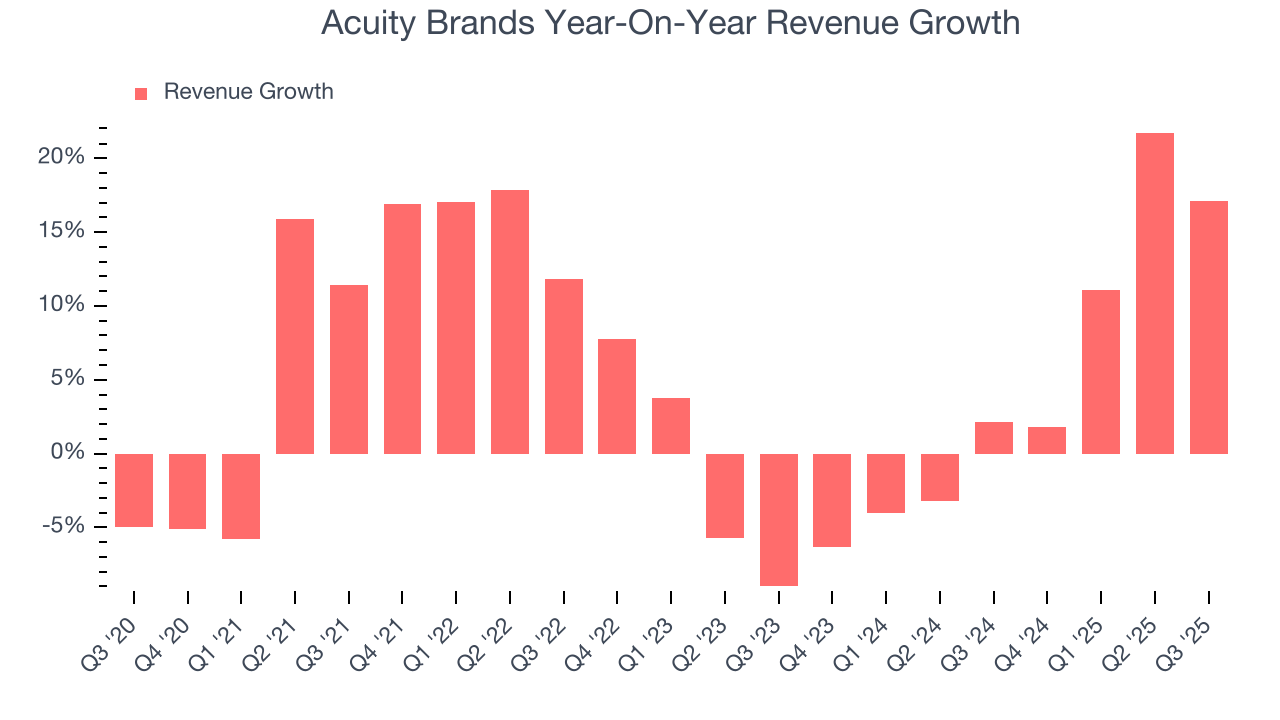
We can dig further into the company’s sales dynamics by analyzing its organic revenue, which strips out one-time events like acquisitions and currency fluctuations that don’t accurately reflect its fundamentals. Over the last two years, Acuity Brands’s organic revenue averaged 1.5% year-on-year growth. Because this number is lower than its two-year revenue growth, we can see that some mixture of acquisitions and foreign exchange rates boosted its headline results. 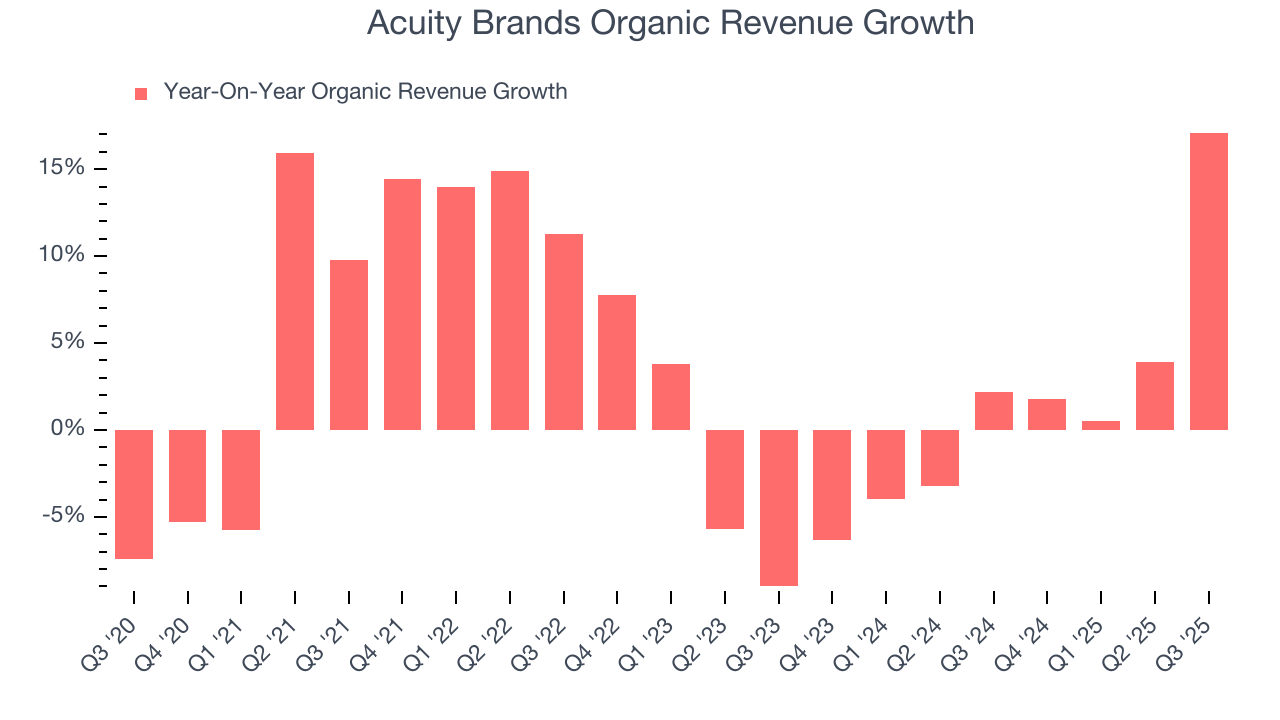
This quarter, Acuity Brands’s revenue grew by 17.1% year on year to $1.21 billion but fell short of Wall Street’s estimates.
Looking ahead, sell-side analysts expect revenue to grow 9.5% over the next 12 months, an improvement versus the last two years. This projection is admirable and indicates its newer products and services will spur better top-line performance.
6. Gross Margin & Pricing Power
All else equal, we prefer higher gross margins because they usually indicate that a company sells more differentiated products and commands stronger pricing power.
Acuity Brands has best-in-class unit economics for an industrials company, enabling it to invest in areas such as research and development. Its margin also signals it sells differentiated products, not commodities. As you can see below, it averaged an elite 44.5% gross margin over the last five years. That means Acuity Brands only paid its suppliers $55.52 for every $100 in revenue. 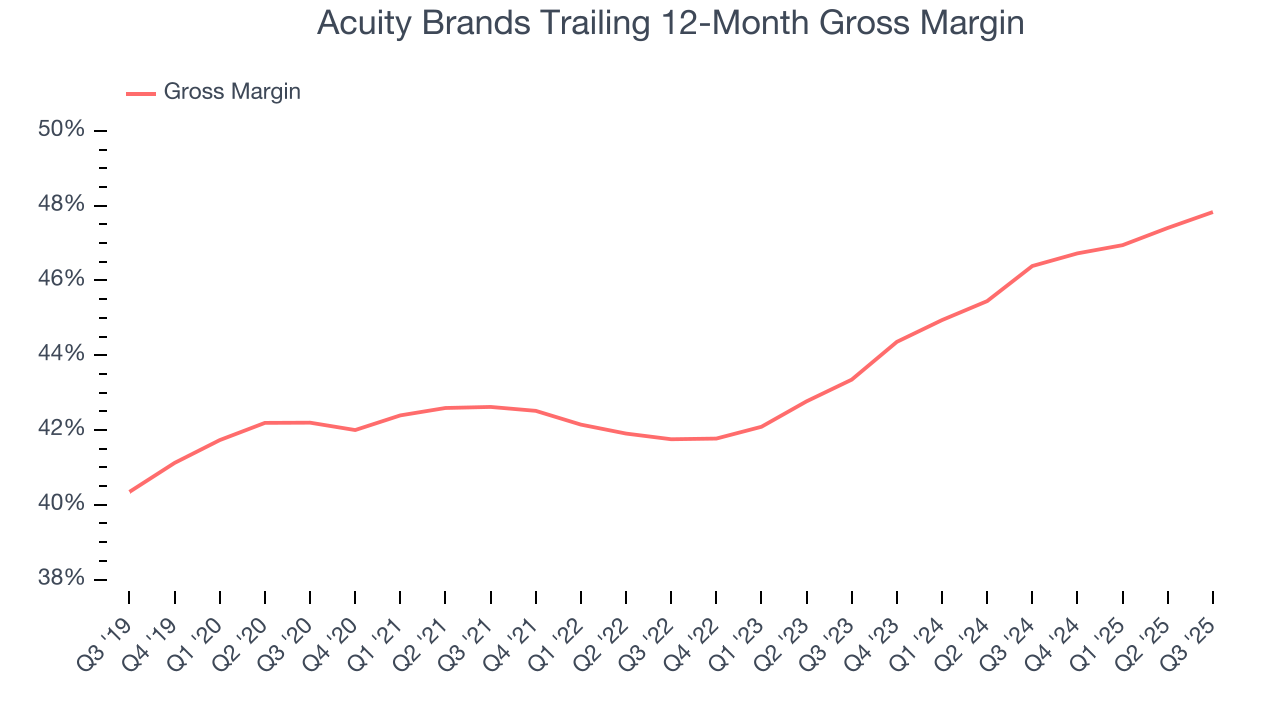
Acuity Brands’s gross profit margin came in at 48.9% this quarter, marking a 1.5 percentage point increase from 47.3% in the same quarter last year. Acuity Brands’s full-year margin has also been trending up over the past 12 months, increasing by 1.4 percentage points. If this move continues, it could suggest better unit economics due to more leverage from its growing sales on the fixed portion of its cost of goods sold (such as manufacturing expenses).
7. Operating Margin
Acuity Brands’s operating margin might fluctuated slightly over the last 12 months but has remained more or less the same, averaging 12.9% over the last five years. This profitability was top-notch for an industrials business, showing it’s an well-run company with an efficient cost structure. This result isn’t surprising as its high gross margin gives it a favorable starting point.
Looking at the trend in its profitability, Acuity Brands’s operating margin might fluctuated slightly but has generally stayed the same over the last five years. This raises questions about the company’s expense base because its revenue growth should have given it leverage on its fixed costs, resulting in better economies of scale and profitability.
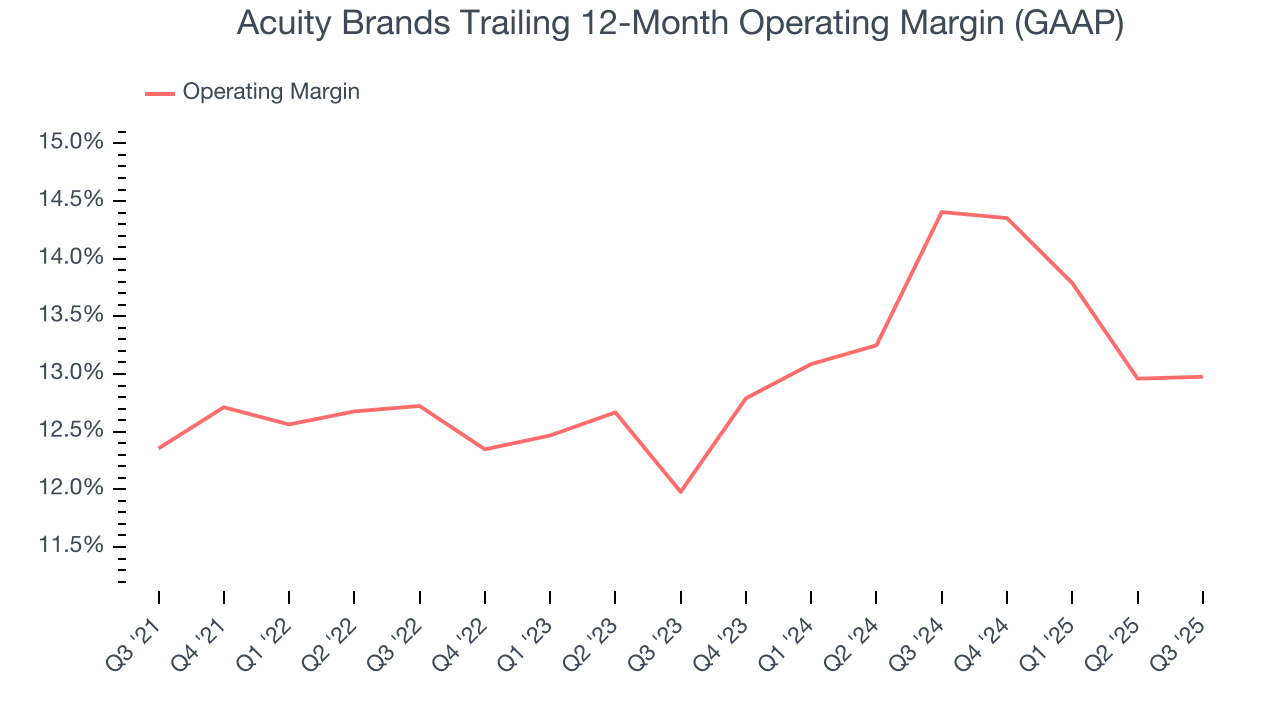
This quarter, Acuity Brands generated an operating margin profit margin of 14.9%, in line with the same quarter last year. This indicates the company’s cost structure has recently been stable.
8. Earnings Per Share
Revenue trends explain a company’s historical growth, but the long-term change in earnings per share (EPS) points to the profitability of that growth – for example, a company could inflate its sales through excessive spending on advertising and promotions.
Acuity Brands’s EPS grew at a spectacular 16.9% compounded annual growth rate over the last five years, higher than its 5.5% annualized revenue growth. This tells us the company became more profitable on a per-share basis as it expanded.
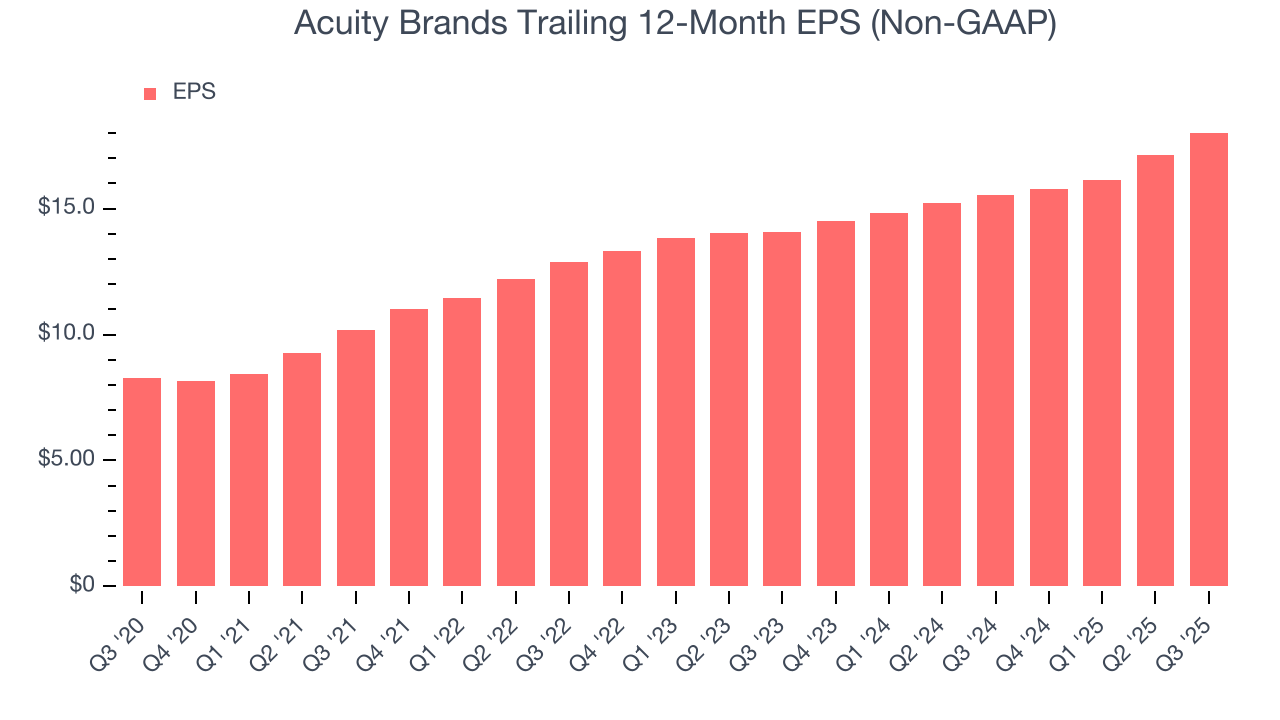
We can take a deeper look into Acuity Brands’s earnings quality to better understand the drivers of its performance. A five-year view shows that Acuity Brands has repurchased its stock, shrinking its share count by 20.2%. This tells us its EPS outperformed its revenue not because of increased operational efficiency but financial engineering, as buybacks boost per share earnings. 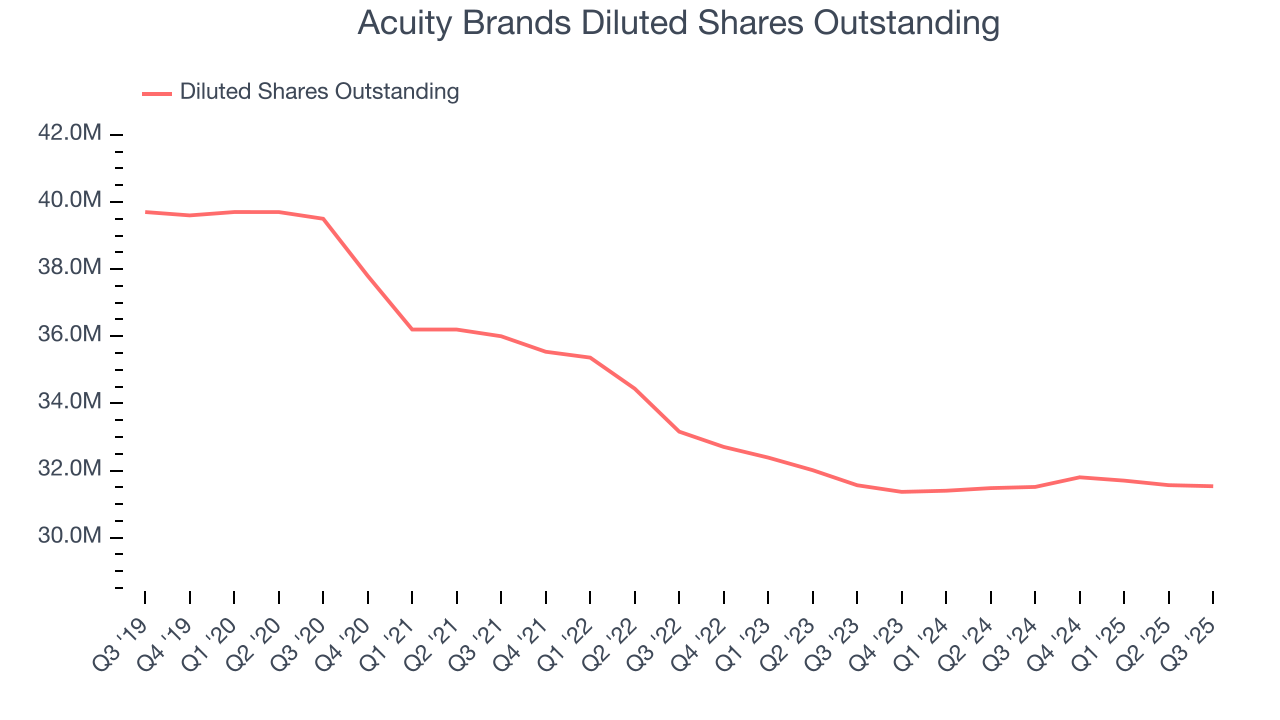
Like with revenue, we analyze EPS over a shorter period to see if we are missing a change in the business.
For Acuity Brands, its two-year annual EPS growth of 13.2% was lower than its five-year trend. We still think its growth was good and hope it can accelerate in the future.
In Q3, Acuity Brands reported adjusted EPS of $5.20, up from $4.30 in the same quarter last year. This print beat analysts’ estimates by 7.5%. Over the next 12 months, Wall Street expects Acuity Brands’s full-year EPS of $18.02 to grow 6.2%.
9. Cash Is King
Free cash flow isn't a prominently featured metric in company financials and earnings releases, but we think it's telling because it accounts for all operating and capital expenses, making it tough to manipulate. Cash is king.
Acuity Brands has shown robust cash profitability, enabling it to comfortably ride out cyclical downturns while investing in plenty of new offerings and returning capital to investors. The company’s free cash flow margin averaged 11.3% over the last five years, quite impressive for an industrials business.
Taking a step back, we can see that Acuity Brands’s margin expanded by 1.7 percentage points during that time. This shows the company is heading in the right direction, and we can see it became a less capital-intensive business because its free cash flow profitability rose while its operating profitability was flat.
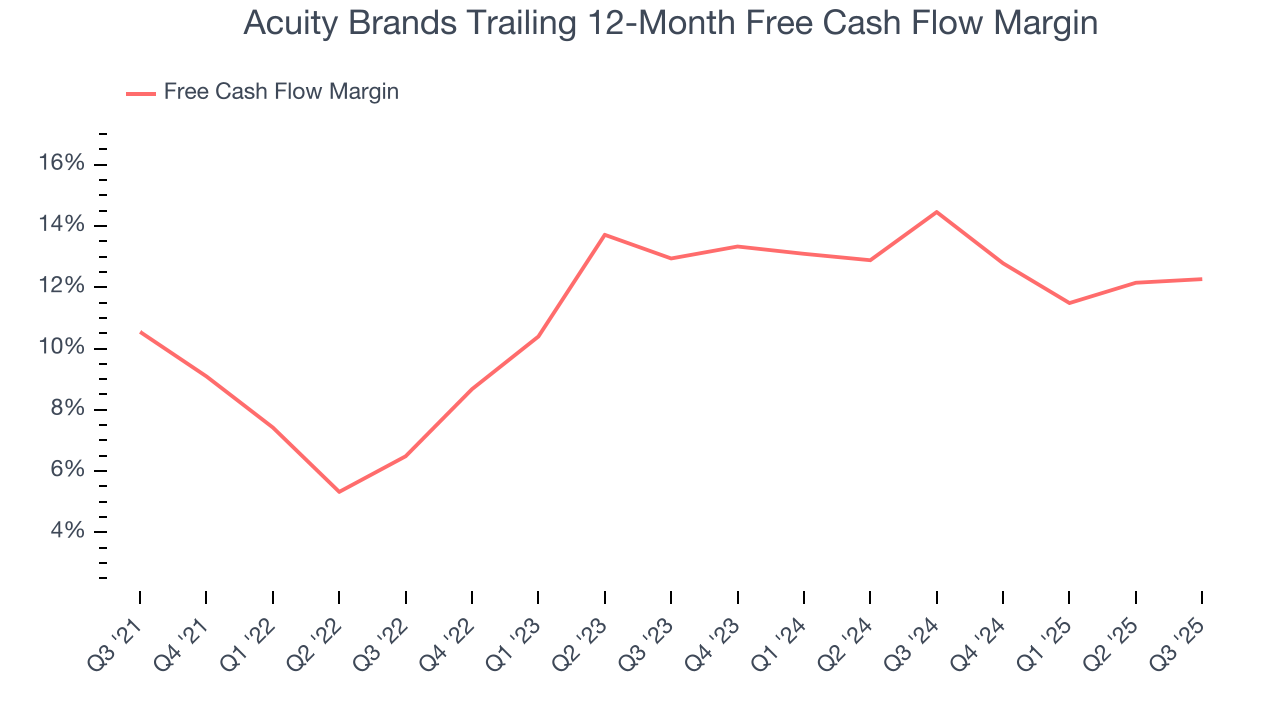
Acuity Brands’s free cash flow clocked in at $177.7 million in Q3, equivalent to a 14.7% margin. This cash profitability was in line with the comparable period last year and above its five-year average.
10. Return on Invested Capital (ROIC)
EPS and free cash flow tell us whether a company was profitable while growing its revenue. But was it capital-efficient? Enter ROIC, a metric showing how much operating profit a company generates relative to the money it has raised (debt and equity).
Although Acuity Brands hasn’t been the highest-quality company lately, it historically found a few growth initiatives that worked out well. Its five-year average ROIC was 16.7%, impressive for an industrials business.
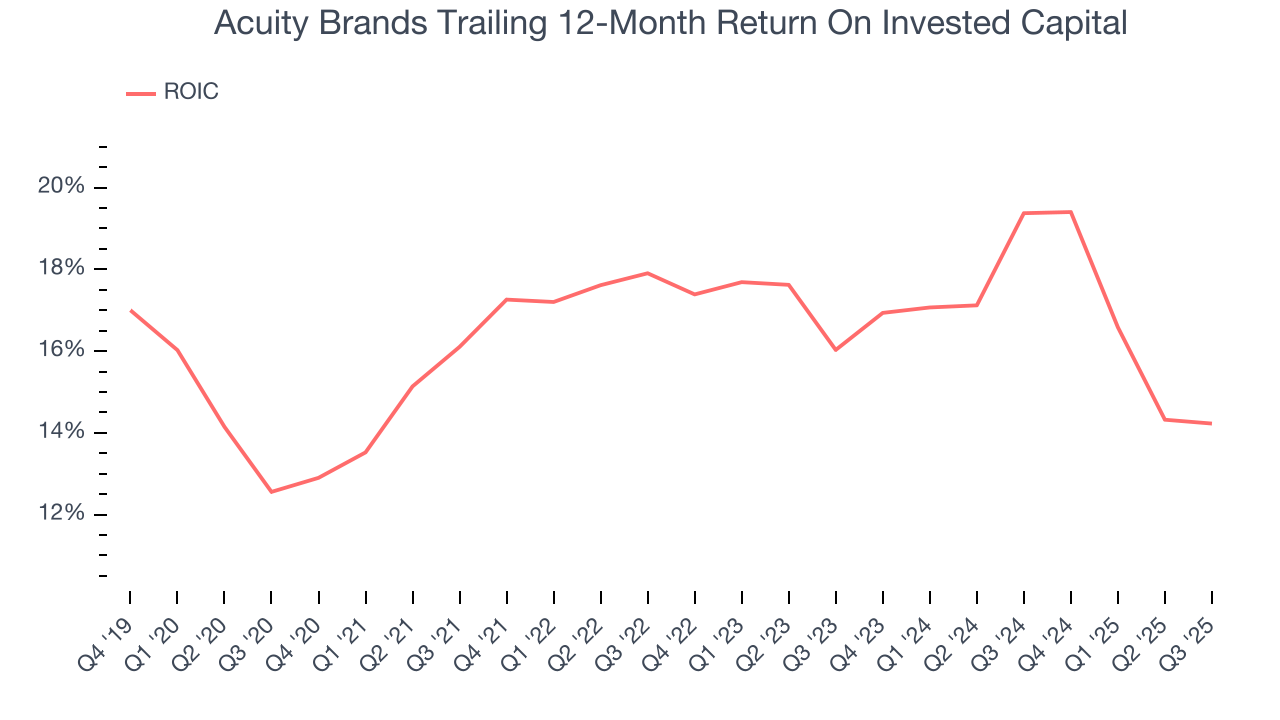
We like to invest in businesses with high returns, but the trend in a company’s ROIC is what often surprises the market and moves the stock price. Uneventfully, Acuity Brands’s ROIC has stayed the same over the last few years. Given the company’s underwhelming financial performance in other areas, we’d like to see its returns improve before recommending the stock.
11. Balance Sheet Assessment
Acuity Brands reported $422.5 million of cash and $896.8 million of debt on its balance sheet in the most recent quarter. As investors in high-quality companies, we primarily focus on two things: 1) that a company’s debt level isn’t too high and 2) that its interest payments are not excessively burdening the business.
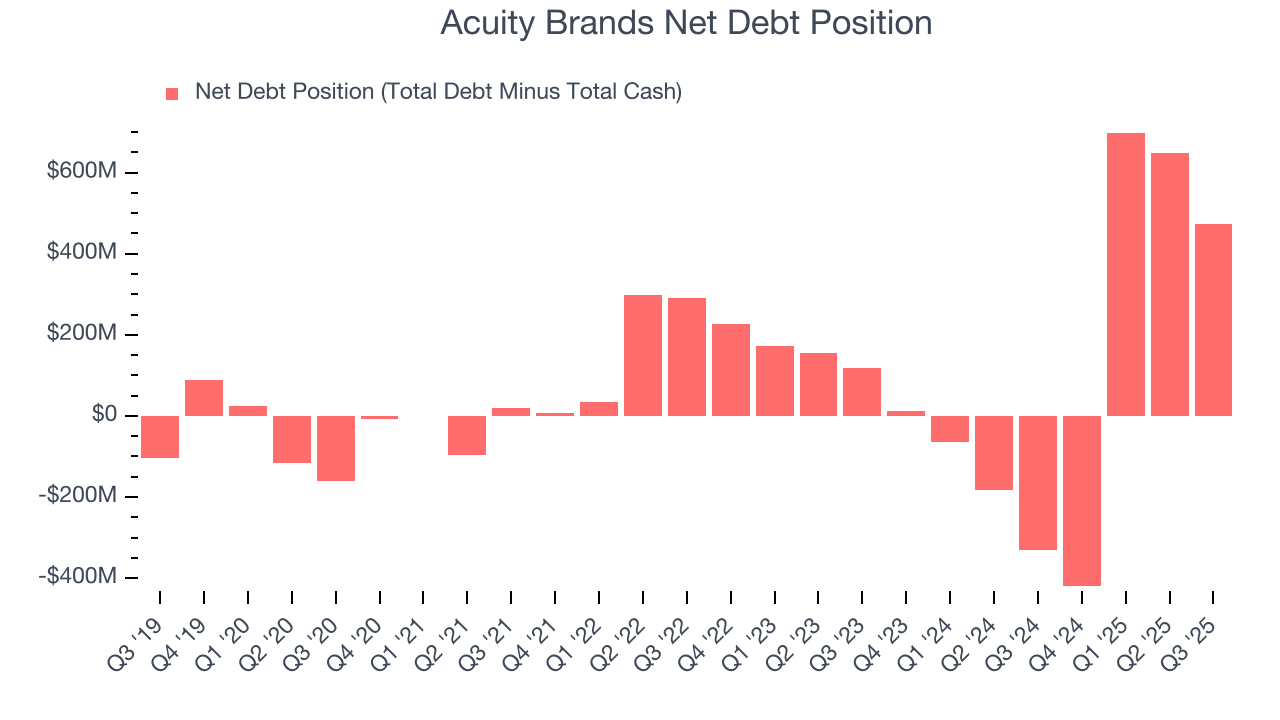
With $825.2 million of EBITDA over the last 12 months, we view Acuity Brands’s 0.6× net-debt-to-EBITDA ratio as safe. We also see its $8 million of annual interest expenses as appropriate. The company’s profits give it plenty of breathing room, allowing it to continue investing in growth initiatives.
12. Key Takeaways from Acuity Brands’s Q3 Results
We were impressed that EPS beat expectations. On the other hand, its revenue missed. Overall, we think this was a mixed quarter. The stock remained flat at $346.19 immediately following the results.
13. Is Now The Time To Buy Acuity Brands?
Updated: December 24, 2025 at 10:36 PM EST
Before investing in or passing on Acuity Brands, we urge you to understand the company’s business quality (or lack thereof), valuation, and the latest quarterly results - in that order.
We think Acuity Brands is a solid business. Although its revenue growth was uninspiring over the last five years, its growth over the next 12 months is expected to be higher. And while Acuity Brands’s flat organic revenue disappointed, its admirable gross margins indicate the mission-critical nature of its offerings. On top of that, its spectacular EPS growth over the last five years shows its profits are trickling down to shareholders.
Acuity Brands’s P/E ratio based on the next 12 months is 18.6x. Looking at the industrials landscape right now, Acuity Brands trades at a pretty interesting price. If you believe in the company and its growth potential, now is an opportune time to buy shares.
Wall Street analysts have a consensus one-year price target of $399.25 on the company (compared to the current share price of $372), implying they see 7.3% upside in buying Acuity Brands in the short term.


